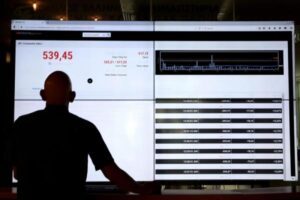O
ne market that received much attention last week because of its price action was copper. Often referred to by those in the financial markets as “Dr Copper” because of the view that rising copper prices are a positive sign for the economy
Early in my career as a commodity analyst, I noticed that often markets went up or down together. This was turned into a unique method of analysis by my friend and colleague John Murphy. He is known as the father of Intermarket analysis and his original book published over 30 years ago was an eye-opener for many analysts.
The financial press had much to say about the action in copper futures as the 6% gain lots of attention. The catalyst for strong buying was the meeting of the Chinese smelter operators that raised the talk of production cuts. Of course, once the late January high of $3.947 was overcome global traders started to buy.
The weekly chart shows that the yearly pivot at $3.92 was decisively overcome. This is a positive sign for copper prices as long as copper prices do not have a weekly close below this level. The copper prices were lower in 2023 and spent most of the year below its yearly pivot.
Breakout headlines make me want to look more closely and examine the evidence. I start with a weekly chart and even though copper made a new nine-month high there is still resistance from January 2023 at $4.355, line a.
The on-balance-volume (OBV) has moved sharply higher as it has overcome the downtrend, line b, from the start of 2023. The EMA for the OBV is starting to turn higher and a strongly rising EMA is needed to confirm a new bull trend.
The daily chart of the copper futures shows that they have been above the daily starc+ band for the past three days. This is a sign that prices could move sideways or pull back over the near term. There is an initial chart support in the $4.00 area and then the rising 20-day EMA at $3.950.
The OBV is above its rising WMA and is testing the downtrend, line b. The OBV is still lagging the price action as it is below the December peak. The Herrick Payoff Index (HPI) uses the price, volume, and open interest data to measure the money flow in commodities.
The HPI moved above the zero line on February 16h which indicated that the money flow had turned positive. It has turned sharply higher in the past week as it has overcome the downtrend, line c, and surpassed the December highs. It is also well above its rising WMA and a drop below the WMA would be the first sign that the trend has weakened.
Those who do not trade commodities could look to Freeport-McMoran (FCX) which is the largest global producer of gold and silver. It is up 18% so far in March with a 12% gain last week. With just two weeks left of trading this month FCX has moved above the monthly downtrend, line a. The completion of the flag formation can give targets as high as $71-$73. The yearly pivot is at $40.35 and the 20-month EMA is at $38.14.
The monthly RS is currently just above its WMA but the weekly RS analysis (not shown) indicates that FCX is leading the SPY
PY
SPY
It is likely to take a week or two before the copper futures or FCX can consolidate or correct enough to set a favorable risk/reward entry point. This would allow one to better manage the risk.
The reversal in some of the stock market averages and the key semiconductor sector after the jobs report has limited the upside for stocks. Yields have moved back towards their rebound highs and raise the possibility that this will be a pivotal week with the FOMC announcement on Wednesday. I will be updating my weekly stock market analysis before Wednesday.
Read the full article here
















